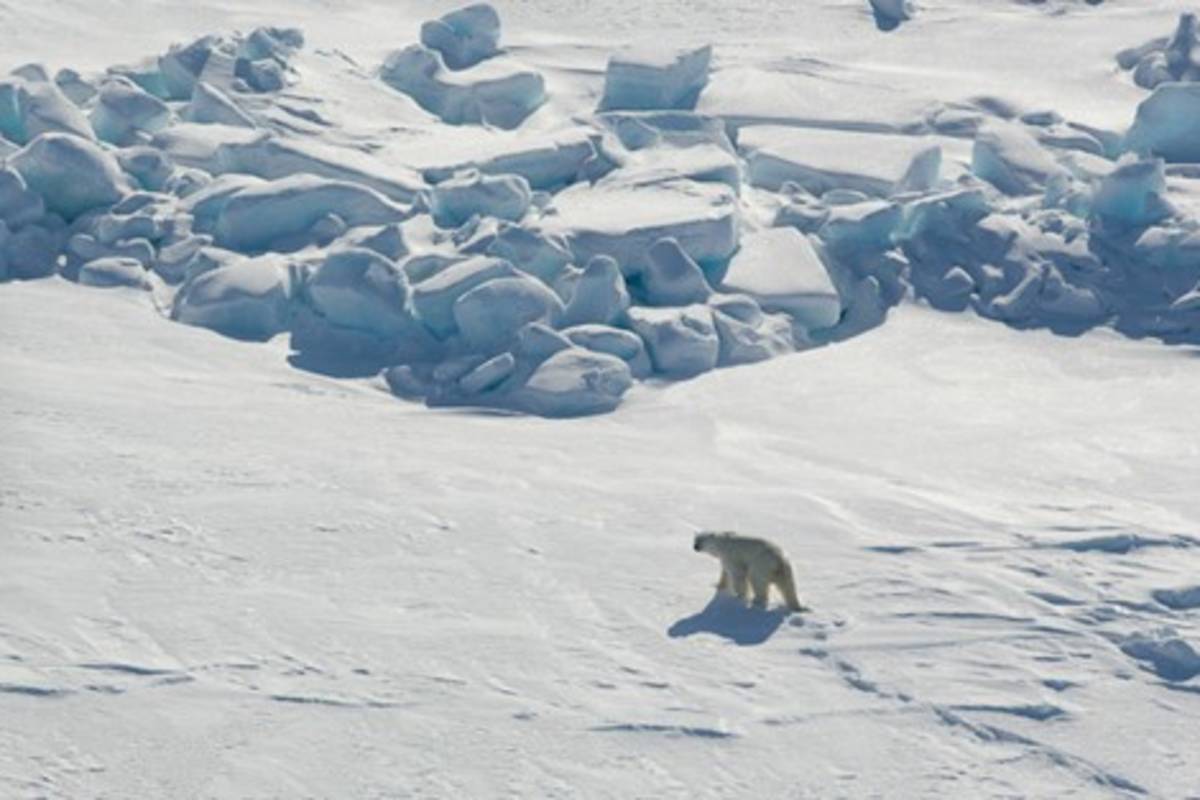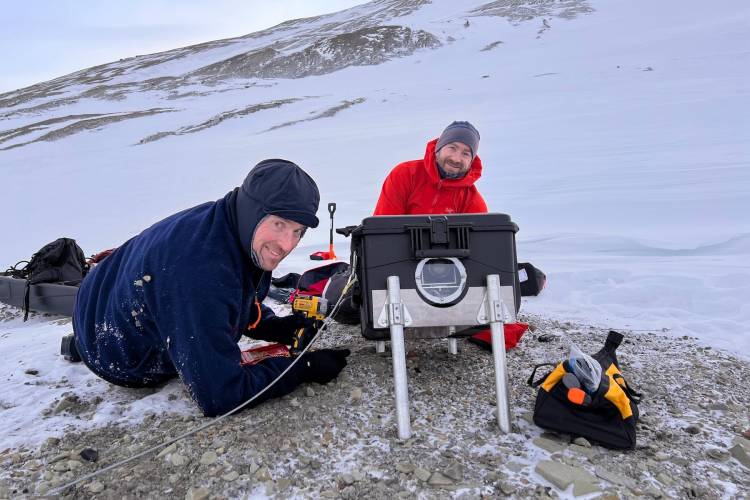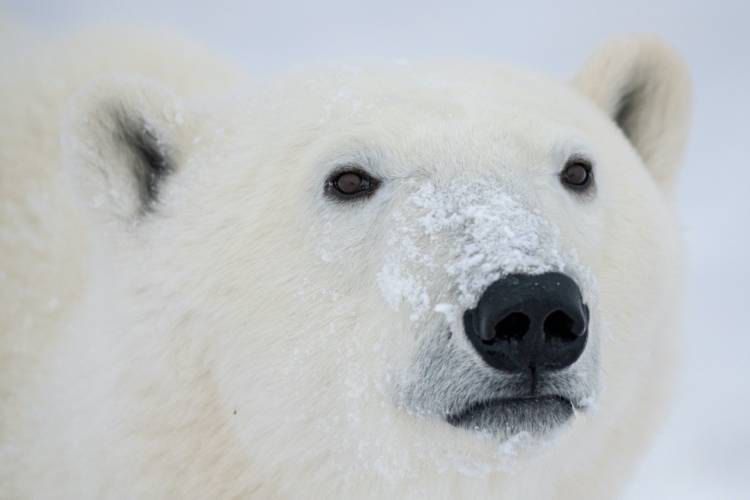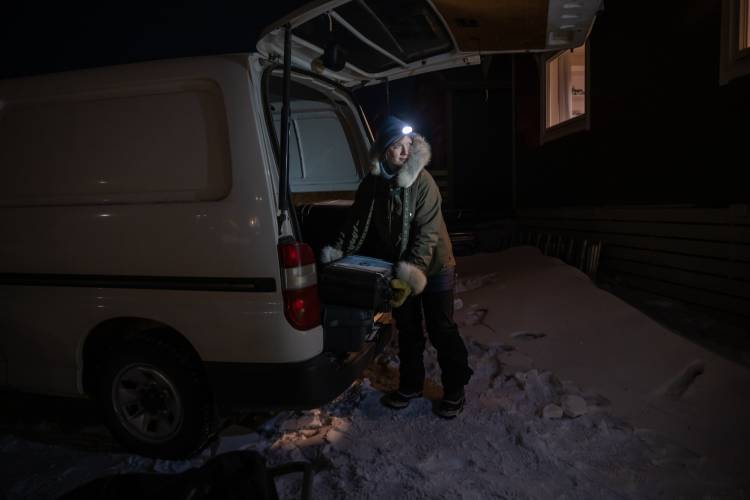Only one experience in my life somewhat reminds me of traveling to the North Slope of Alaska to study polar bears: when I bicycled around the United States at the age of 18. How so? Well, when one bicycles for days, weeks, and then months the distance home becomes vast - in both time and space - especially when traveling thousands of miles as I did then.
Coming to study polar bear denning ecology in Alaska is similar. It begins as I board a plane in Utah, rocket northward for hours, then board another, smaller, jet in Anchorage and hurtle northward yet more hours. Once in Deadhorse (which could just as easily and understandably have been named Frozen Horse), I jump into a truck and drive yet more hours through drifting snows across a wind-blasted, frozen arctic landscape. Then, if that weren't already enough, I don heavy arctic gear -boots, pants, parka, gloves, mittens, balaclava—and straddle a snow machine and ride yet more hours to reach denned bears.
At that point it's deja vu: standing on the northernmost edge of North America, bundled up like a child by an overprotective mother and sent to play in the snow, I sense that home is far, far away and cannot be reached without great patience exercised over hours to days. So here I am now, Tom Smith, Brigham Young University professor and bear researcher—along with Jay Olson, BYU graduate student, and BJ Kirschhoffer, Polar Bears International's director of field operations—with days of travel behind me, settled in a few miles from the icy shores of the Southern Beaufort Sea, domain of the Great White Bear.
Some in North America may refer to March as springtime, but don't let that mislead you here: whereas cherry blossoms will soon adorn the National Mall in Washington DC, March is among the coldest, if not the coldest, months of the year here. When we arrived this week to conduct the 11th season of polar bear maternal den studies, it was a mind and body numbing 43 degrees below zero ... and that's without the wind chill. Even the slightest breezes (which are ever-present here) quickly lower 43 below to the 70 below range and beyond.
Trust me on this one: life in the lower latitudes does little to prepare one for these extremes. Here trucks shudder and shake even on the smoothest of roads due to "square" tires (flattened on one side while parked, frozen tires lose their round shape and only slowly round out after miles of road)—and exposed flesh (particularly on the face and hands) doesn't just sting - it burns painfully as the nervous system's klaxon sounds the alarm. Mere seconds of exposure results in damage which takes weeks to repair. The snow that covers everything here is much more like Styrofoam in that it is tough, durable, and can be cut into long, thin board-like strips without crumbling; and riding a snowmobile in this part of the Arctic is a bone-jarring experience, much more like driving a car with four flat tires over lumpy, white asphalt than motoring in cushioned comfort over feather-like snowpack. Electronics, if exposed even momentarily, fail. GPS units are useless, their LCD screens (liquid crystal displays) instantly frozen and unreadable (becoming FCD screens - frozen crystal displays) unless kept in a heated, enclosure.
Even the simplest tasks become arduous as we move clumsily in four-inch-thick boots, billowing goose-down pants, heavily insulated Canada Goose parkas, and attempts to perform tasks with mitts the size of boozing gloves. Our heads are encased in heavily padded helmets with heated face shields (to retard frosting); our hand grips and throttles are heated up like toasters, helping to drive back the paralyzing chill.
When asked if working with polar bears is dangerous, I quickly reply in the affirmative, but am quick to point out that it's not the bears I fear, but the elements. Certainly anything as large and well-equipped as a polar bear is to disassemble mammals for ingestion must be taken seriously, but the elements pose a much more insidious threat that must be dealt with at every turn. This research project's safety record is impressive in that no one has been injured, but it is not by chance that we've kept St. Murphy (of Murphy's Law) at bay. For anyone to work with us they must take -at a minimum—the following safety training:
Wilderness first aid and CPR
Cold weather survival
Firearms safety
Firing range qualifications
Snowmobile safety
Four wheel drive vehicle safety
Bear safety
Bear spray certification
Each of us must also undergo a full day of training unique to those who work in and around North America's largest oilfield, a place that comes with unique risks and hazards all its own.
















